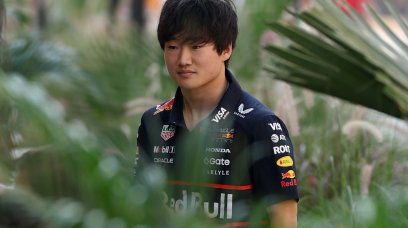The FIA have moved to clamp down further on drivers wearing jewellery while out on track, by introducing addendums to the scrutineering documentation that teams must sign coming into a Grand Prix weekend. Over the Australian Grand Prix, the Race Director's notes re-iterated long-standing rules regarding drivers wearing jewellery out on track – drivers haven't been permitted to do so since 2005, but it's a rule that has never been stringently enforced. In Australia, Lewis Hamilton indicated that he'd find it difficult to follow the rule as he joked about the permanence of some of his body piercings and jewellery, while team boss Toto Wolff questioned whether the FIA really wanted to go down the route of battling with the drivers over the issue.
The FIA's clampdown begins in Miami
With the rules regarding the banning of jewellery being written into the FIA's International Sporting Code, two Formula E drivers fell foul of the governing body at last weekend's Monaco E-Prix. Porsche's Pascal Wehrlein and Jaguar's Mitch Evans were both given a penalty point on their Super Licence after the qualifying session, as they were found to be wearing metal chains around their necks when they climbed from their cars. They have also been given a suspended €1000 euro fine, which will come into effect if they commit the same offence again. Coming into the Miami Grand Prix weekend, the FIA have introduced a section to the mandatory technical scrutineering forms that teams must sign on registration for an event. The forms now have two extra passages, outlining the rules stipulated in the International Sporting Code, which the teams must sign. The teams must declare that the drivers do not wear jewellery, and that their racing underwear is also according to the FIA's fire-proof safety standards. These two aspects are now considered as part of the technical inspection of the cars. This means that, if the standards aren't met, the registration could be considered as illegal. Normally, it would result in a ban but, in this case, is more likely to result in a fine or a grid penalty. "I think it's important to remember why wearing any kind of jewellery is not permitted in the regulations, and that is to avoid injury," Wolff told media, including RacingNews365.com , on Thursday evening in Miami. "Where do you draw the line? It can cause an injury and I think all of us don't want to see an accident, freak accident, where suddenly there is a follow-on injury from jewellery. "That's why the FIA, at the moment, is trying to draw a line in the sand. I understand where they're coming from."
Why are the FIA being so strict?
Given that the wearing of jewellery appears, from an external standpoint, to be a harmless expression of individuality, the FIA have outlined the reasons for the sudden enforcement of a rule that has been in place for 17 years. With the governing body's processes coming under scrutiny in light of the fallout from the 2021 Abu Dhabi Grand Prix, the FIA explained the implications of what could happen in the event of a driver crashing. "This regulation is written in consideration that the wearing of jewellery underneath the required flameproof clothing can reduce the protection afforded by this equipment," read the document from the FIA. "Metallic objects, such as jewellery, in contact with the skin can reduce heat transmission protection and thus may increase the risk of burn injuries in the event of a fire. "The wearing of jewellery during the competition can hinder both medical interventions as well as subsequent diagnosis and treatment should it be required following an accident. "The presence of jewellery can slow, due to the risk of 'snagging', the emergency removal of driver safety equipment such as helmet, balaclava, and overalls. "In the case that medical imaging is required to inform diagnosis following an accident, the presence of jewellery on the body can cause significant complication and delay. "In the worst case, the presence of jewellery during imaging may cause further injury. Jewellery in and/or around the airway can pose specific additional risks should it become dislodged during an accident and either ingested or inhaled."
Most read







